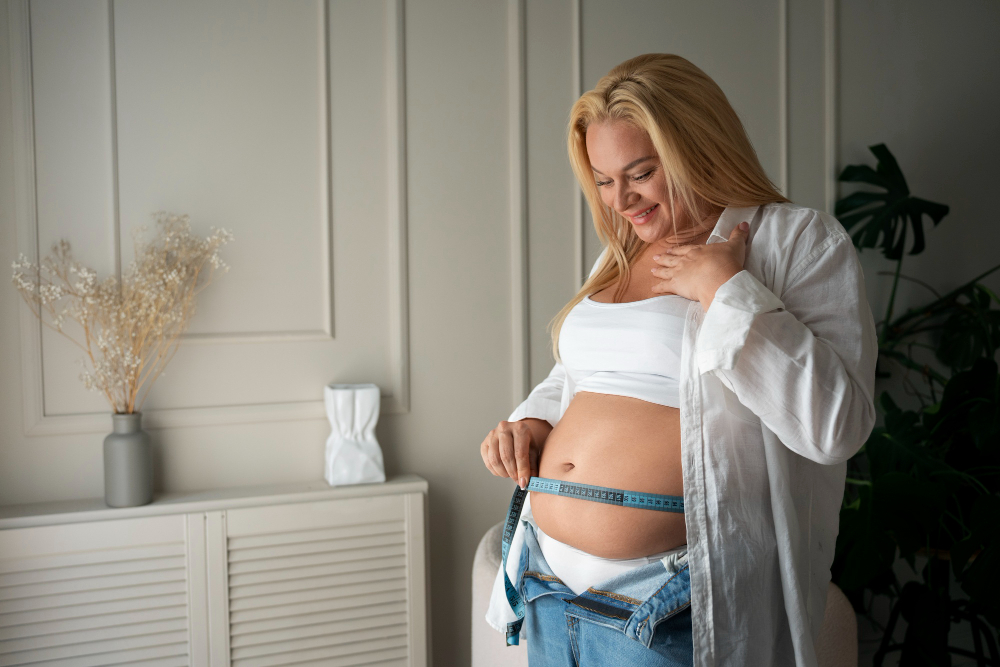Having a baby is one of the most life-changing experiences. But no matter how many pregnancy books you read, nothing fully prepares you for what happens to your body after birth. Your belly feels softer, your clothes fit differently, and your breasts may sag after breastfeeding. It’s all normal, but that doesn’t mean it’s easy to adjust.
Many new moms in areas like Houston struggle with loose skin, lingering baby weight, and hormonal shifts that make them feel disconnected from their bodies. They even wonder, “Will my body ever go back to how it was?” The truth is that some changes are temporary, while others may need a little extra help.
This guide will help you understand why these changes happen and what you can do about them—from exercise and skincare to medical treatments to help you feel like yourself again. Let’s begin!
Your Belly Still Looks Pregnant After Birth
Many new moms are surprised that their bellies don’t shrink back right away. Even weeks after delivery, it may still look round and feel soft. This happens because your uterus takes time to contract. It stretched over nine months to accommodate your baby and needs several weeks to return to its normal size.
Another common issue is diastasis recti, a condition where the abdominal muscles separate during pregnancy. This can make your belly protrude even after you lose the baby weight. Some women heal naturally over time, but others need targeted core exercises or physical therapy to bring the muscles back together.
What You Can Do?
If this is something that concerns you, the following gentle movements can help:
- Postnatal yoga,
- Deep core activation, and
- Low-impact strength training
In addition, wearing an abdominal support band may also provide temporary relief. However, avoid crunches or intense ab workouts too soon, as they can worsen diastasis recti.
Your Breasts Don’t Look the Same
Pregnancy and breastfeeding stretch the breast tissue, and once the milk supply dries up, many women notice a loss of volume and firmness. Hormonal changes, weight fluctuations, and loss of volume all further contribute to this change. It’s completely normal, but that doesn’t mean you have to accept it if it bothers you.
What You Can Do?
If sagging affects your confidence, breast augmentation can help restore volume and give your breasts a more youthful appearance. This procedure involves implants or fat transfer to add fullness and shape. For those with significant sagging, a breast lift (mastopexy) can be combined with augmentation to raise the breasts while adding volume. Nevertheless, consulting a board-certified plastic surgeon is vital here.
In fact, one patient who had breast augmentation in Houston by Dr. Lyos shared, “He truly listened to what I wanted and made sure the results suited my body. I couldn’t be happier with how natural and beautiful they look!”
A great surgeon will consider your whole body when planning your transformation. This includes your body shape, clothing preferences, and lifestyle to sculpt breasts that look and feel just right for you. Finding a provider who listens to your goals is key.
Stubborn Weight That Won’t Budge
Losing weight after pregnancy isn’t as simple as “eating healthy and exercising.” After all, during pregnancy, your body goes through major hormonal changes that can slow down metabolism and affect fat storage. After delivery, sleep deprivation and stress can also increase cortisol levels, making it harder to shed extra pounds.
What You Can Do?
Instead of focusing on rapid weight loss, aim for small, sustainable changes:
- Prioritize protein and fiber to keep you full and support muscle recovery.
- Stay hydrated to flush out excess fluids and aid digestion.
- Find movement you enjoy, whether it’s walking, dancing, or strength training.
If the weight isn’t coming off despite your efforts, hormonal imbalances or thyroid issues could be at play. Talking to a doctor can help rule out medical conditions and guide you toward the best approach for your body.
Skin Is More Sensitive and Acne-Prone
If your skin feels more sensitive or prone to breakouts after pregnancy, hormones are likely to blame. Estrogen and progesterone levels fluctuate, leading to increased oil production, breakouts, redness, and irritation. Some women also develop melasma, causing dark patches on the skin.
What You Can Do?
Using gentle, fragrance-free skincare can help prevent irritation. Look for hydrating ingredients like hyaluronic acid and niacinamide to calm redness and restore balance.
Salicylic acid, benzoyl peroxide (in low doses), and mild exfoliation can help with acne. If breakouts persist, consider professional treatments like chemical peels or laser therapy to restore a smooth, even complexion.
Final Thoughts
Your body changes after pregnancy, but that doesn’t mean you have to feel uncomfortable in your own skin. Some transformations heal naturally over time, while others might need extra care through exercise, skincare, or medical treatments.
The most important thing? Give yourself grace. Your body created life, and that’s incredible. Whether you embrace your new shape or explore treatments, do what makes you happy and confident. Feeling good in your own skin is the ultimate goal!








Leave a Reply